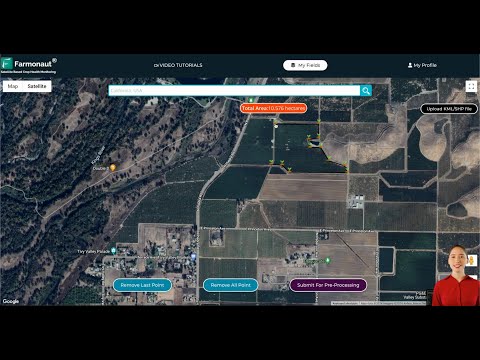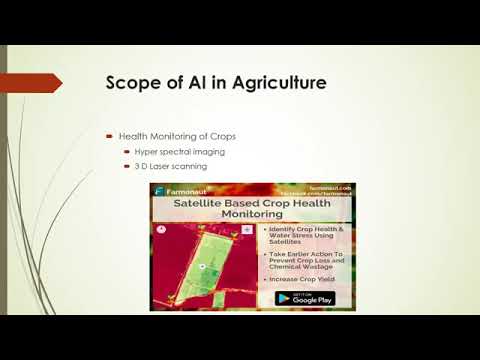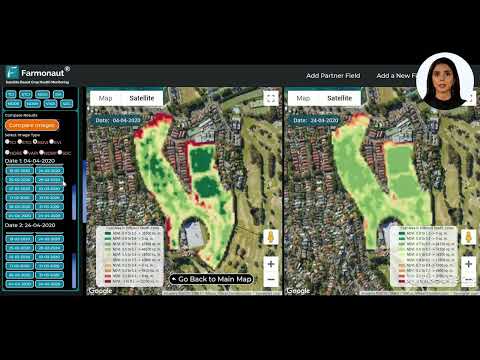Wisconsin Supreme Court Election: Key Takeaways from Battleground State’s Pivotal Vote
In a pivotal moment for Wisconsin’s political landscape, the recent Supreme Court election has sent shockwaves through the state and beyond. As we delve into the intricacies of this crucial vote, we’ll explore the far-reaching implications for both state and national politics. From the influence of campaign spending to the impact of voter ID laws, this analysis will provide a comprehensive look at the factors shaping Wisconsin’s political future and its significance as a key battleground state.
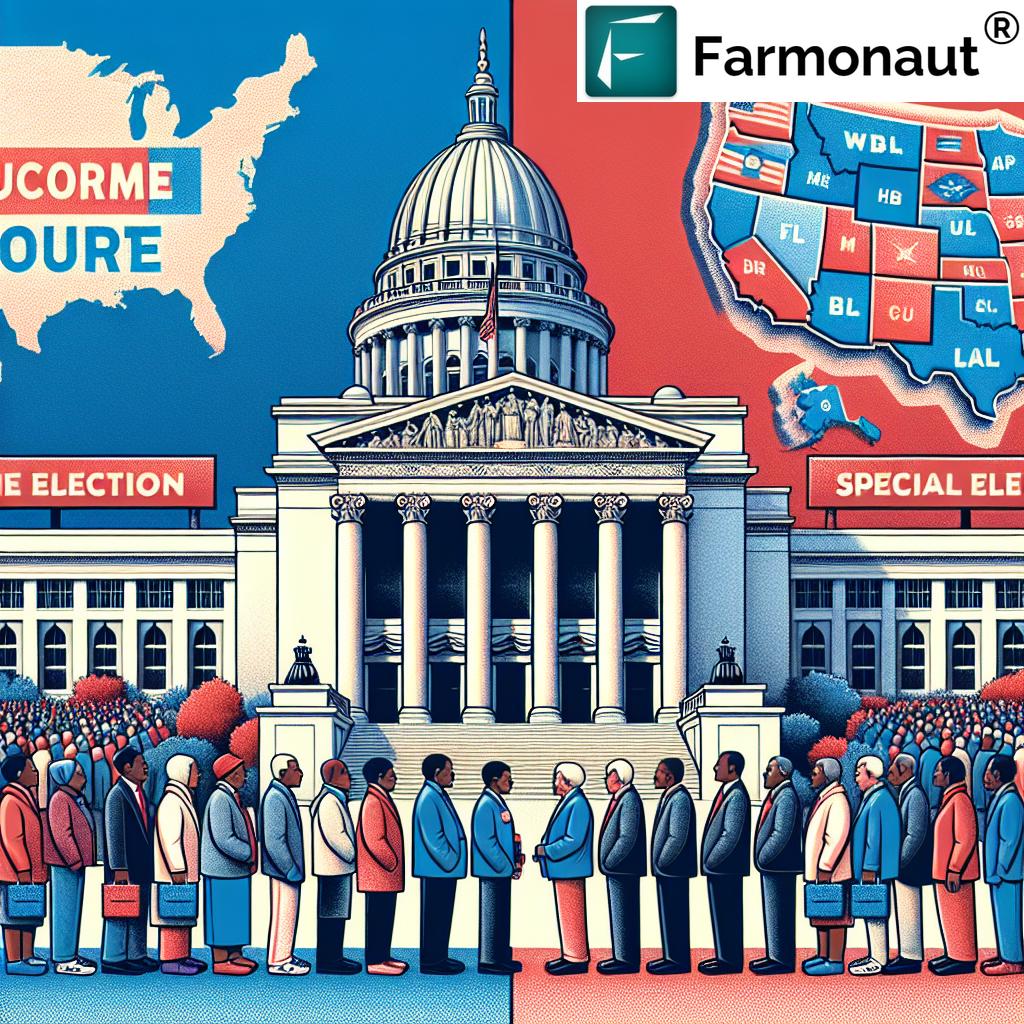
“Wisconsin’s Supreme Court election saw record-breaking campaign spending, exceeding $42 million across all candidates.”
1. Wisconsin Rebuffs Trump and Musk’s Influence
In a stunning turn of events, Wisconsin voters delivered a clear message in the recent Supreme Court election, defying both former President Donald Trump and tech billionaire Elon Musk. Liberal candidate Susan Crawford emerged victorious, securing a 10-year term and maintaining the 4-3 liberal majority on the state’s highest court. This outcome serves as a critical gauge of voter sentiment in one of the nation’s most contested swing states, especially considering Trump’s narrow victories in Wisconsin in both 2016 and 2024.
The election took on national significance when Trump endorsed Crawford’s conservative opponent, Brad Schimel, and Musk invested heavily in the race. Despite this high-profile support, Wisconsin voters chose to maintain the liberal majority on their Supreme Court, signaling a potential shift in the state’s political dynamics.
2. Record-Breaking Campaign Spending
This Supreme Court race quickly became the most expensive judicial contest in U.S. history, with both parties vying for control of the court’s majority in a key swing state. Musk’s involvement was particularly notable, as he and aligned groups poured an estimated $20 million into the race. This unprecedented level of spending highlights the increasing nationalization of state judicial races and the growing recognition of their importance in shaping policy outcomes.
While money certainly played a significant role in the election, it’s clear that Wisconsin voters were not swayed solely by financial might. The outcome raises questions about the effectiveness of large-scale campaign spending in judicial races and may prompt a reevaluation of campaign strategies in future contests.
3. Voter ID Laws and Constitutional Amendment
Interestingly, while Wisconsin voters chose to maintain a liberal majority on the Supreme Court, they also overwhelmingly approved a referendum to enshrine the state’s voter ID requirement in the constitution. This seemingly contradictory outcome underscores the complex political landscape in Wisconsin and the nuanced views of its electorate.
The constitutional amendment will make it more difficult for any future Democratic majority to repeal or modify voter ID laws, potentially impacting future elections. This development is particularly significant given the ongoing national debate surrounding voting rights and election integrity.
4. Implications for Future Elections
The results of this Supreme Court election offer valuable insights into the current political climate in Wisconsin and may have implications for future midterm and presidential elections. As a key battleground state, Wisconsin’s political trends are closely watched by national parties and strategists.
The liberal victory in this race, coupled with recent Democratic gains in the state, suggests that Wisconsin remains highly competitive. However, it’s important to note that the state narrowly went for Trump in the 2024 presidential election, highlighting its status as a true swing state.
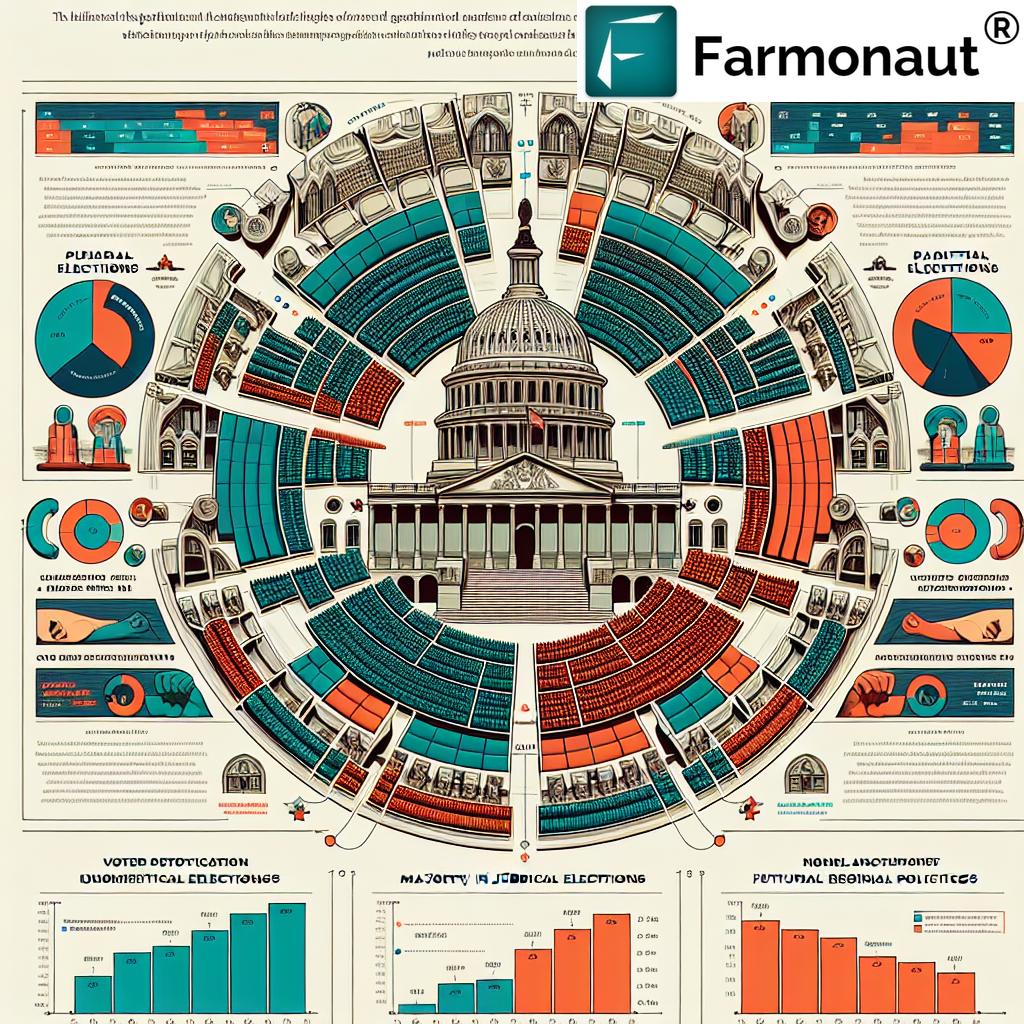
5. Impact on Congressional Redistricting
One of the most significant implications of this Supreme Court election is its potential impact on congressional redistricting. With liberals maintaining control of the court, they will likely have the final say on key issues, including the redrawing of congressional maps. This could have far-reaching consequences for the balance of power in Wisconsin’s congressional delegation, which currently favors Republicans with 6 out of 8 House seats.
The redistricting process is crucial for determining political representation and can significantly influence the outcomes of future elections. As such, the maintenance of a liberal majority on the Wisconsin Supreme Court could lead to more competitive districts and potentially alter the state’s political landscape for years to come.
6. The Role of Outside Influence in State Elections
The involvement of national figures like Trump and Musk in this state Supreme Court race highlights the increasing nationalization of local elections. This trend raises important questions about the role of outside influence in state-level politics and the potential impact on local governance.
While national attention can bring important issues to the forefront, it may also overshadow local concerns and priorities. As we move forward, it will be crucial to strike a balance between national interests and local governance to ensure that state elections truly reflect the will of the voters they directly affect.
7. Lessons for Campaign Strategy
The outcome of this election offers valuable lessons for future campaign strategies, particularly in judicial races. Despite significant financial backing and high-profile endorsements, the conservative candidate was unable to secure victory. This suggests that voters may be prioritizing other factors, such as judicial experience, local connections, or specific policy positions, over national endorsements or financial resources.
Moving forward, candidates and parties may need to reassess their approach to judicial campaigns, focusing more on local issues and voter engagement rather than relying heavily on national figures or large-scale advertising campaigns.
8. The Importance of Voter Turnout
One of the key factors in this election was voter turnout. Despite being an off-year election, Wisconsin saw relatively high participation rates, particularly in urban areas. This level of engagement demonstrates the growing recognition among voters of the importance of state Supreme Court races and their potential impact on a wide range of issues.
As we look ahead to future elections, both in Wisconsin and across the country, the ability to mobilize voters and drive turnout will likely be a critical factor in determining outcomes. Parties and candidates will need to focus on voter education and engagement strategies to ensure high levels of participation, especially in traditionally low-turnout judicial races.
9. The Role of Technology in Modern Campaigns
The Wisconsin Supreme Court election also highlighted the growing importance of technology in modern political campaigns. Both sides leveraged digital platforms for voter outreach, fundraising, and message dissemination. This trend is likely to continue and intensify in future elections, with campaigns increasingly relying on data analytics, social media strategies, and targeted digital advertising to reach voters.
In this context, it’s worth noting the innovative approaches being taken in other sectors to leverage technology for improved decision-making. For instance, in the agricultural sector, companies like Farmonaut are utilizing satellite imagery and AI to provide farmers with real-time crop health monitoring and personalized advisory services. While the applications differ, the underlying principle of using technology to inform decision-making processes is increasingly relevant across various domains, including politics and elections.
“Florida’s special elections resulted in a net gain of 4 seats for Republicans in the House of Representatives.”
10. Implications for National Politics
While the Wisconsin Supreme Court election was a state-level contest, its implications extend far beyond the state’s borders. As a key battleground state, Wisconsin’s political trends are closely watched by national parties and strategists. The outcome of this election may influence party strategies and resource allocation in the upcoming 2026 midterm elections and beyond.
Moreover, the issues at stake in this election – including voting rights, redistricting, and the balance of power between branches of government – are mirrored in many other states across the country. As such, the Wisconsin election serves as a bellwether for broader national trends and may foreshadow similar contests in other battleground states.
11. The Evolving Role of State Supreme Courts
This election underscores the growing importance of state Supreme Courts in shaping policy and resolving key political disputes. In recent years, state high courts have been called upon to adjudicate issues ranging from election laws to redistricting, often serving as the final arbiter in contentious political battles.
As the role of these courts continues to evolve, we can expect to see increased attention and resources devoted to state judicial races. This trend may necessitate a reevaluation of how we select state Supreme Court justices and the rules governing judicial elections to ensure the integrity and independence of the judiciary.
| Factor | Description | Impact on Election Outcome |
|---|---|---|
| Campaign Spending | Record-breaking expenditure, exceeding $42 million | High |
| Voter ID Laws | Constitutional amendment passed to enshrine voter ID requirement | Medium |
| Voter Turnout | Relatively high participation, especially in urban areas | High |
| Party Endorsements | High-profile endorsements from national figures like Trump and Musk | Medium |
| Key Issues | Redistricting, voting rights, balance of power in state government | High |
| Implications for Future Elections | Potential shifts in campaign strategies and resource allocation | High |
| National Political Significance | Bellwether for trends in other battleground states | High |
12. The Intersection of Technology and Politics
As we’ve seen in this election, technology plays an increasingly crucial role in modern political campaigns. From data-driven voter targeting to social media outreach, digital tools are reshaping how candidates connect with voters and how voters engage with the political process.
This trend towards digitalization and data-driven decision-making is not unique to politics. In fact, we’re seeing similar transformations across various sectors, including agriculture. For instance, Farmonaut’s crop plantation and forest advisory services utilize advanced satellite imagery and AI algorithms to provide farmers with personalized insights and recommendations. While the applications differ, the underlying principle of leveraging technology for improved decision-making is increasingly relevant across domains.
13. The Future of Judicial Elections
The Wisconsin Supreme Court election raises important questions about the future of judicial elections in the United States. As these races become increasingly politicized and attract significant outside spending, there are growing concerns about the impact on judicial independence and the public’s perception of the courts.
Some states have explored alternative methods for selecting judges, such as merit-based appointment systems or nonpartisan elections. As we move forward, it will be crucial to balance the need for judicial accountability with the importance of maintaining an independent judiciary free from undue political influence.
14. The Role of Media in Shaping Public Opinion
Throughout this election, media coverage played a significant role in shaping public opinion and driving voter engagement. From traditional news outlets to social media platforms, the ways in which information about the candidates and key issues was disseminated had a substantial impact on the election’s outcome.
Moving forward, it will be essential for voters to critically evaluate media sources and seek out diverse perspectives to make informed decisions. This is particularly important in an era of increasing media polarization and the proliferation of misinformation.
15. Lessons for Other Battleground States
The Wisconsin Supreme Court election offers valuable lessons for other battleground states facing similar political dynamics. From the importance of voter engagement to the impact of outside spending, the insights gained from this election can inform strategies and decision-making in future contests across the country.
As we look ahead to upcoming elections in other key swing states, political parties, candidates, and voters alike would do well to study the Wisconsin example and consider how these lessons might apply to their own local contexts.
Conclusion
The Wisconsin Supreme Court election serves as a microcosm of the broader political landscape in the United States. It highlights the increasing nationalization of state-level races, the growing importance of judicial elections, and the complex interplay of factors that shape electoral outcomes in battleground states.
As we move forward, it’s clear that the lessons learned from this pivotal vote will have far-reaching implications for future elections, both in Wisconsin and across the country. By carefully analyzing the factors that influenced this outcome, we can gain valuable insights into the evolving nature of American democracy and the challenges and opportunities that lie ahead.
Just as technology is reshaping the political landscape, it’s also transforming other sectors of our society. In agriculture, for instance, companies like Farmonaut are leveraging advanced technologies to provide farmers with valuable insights and tools for more efficient and sustainable farming practices. To learn more about how technology is revolutionizing agriculture, check out Farmonaut’s innovative solutions:
- Carbon Footprinting: Help monitor and reduce environmental impact in agricultural operations.
- Product Traceability: Ensure transparency and security in agricultural supply chains.
- Crop Loan and Insurance: Streamline access to financial services for farmers.
As we continue to navigate the complex landscape of modern politics and technology, it’s clear that innovation and adaptability will be key to addressing the challenges of the future, whether in the realm of elections or agriculture.
FAQ Section
- What was the main outcome of the Wisconsin Supreme Court election?
Liberal candidate Susan Crawford won, maintaining the 4-3 liberal majority on the court. - How much money was spent on this election?
The election saw record-breaking spending, exceeding $42 million across all candidates. - What role did Elon Musk play in this election?
Musk invested heavily in the race, contributing an estimated $20 million to support the conservative candidate. - How might this election impact future redistricting in Wisconsin?
The liberal majority on the court will likely have the final say on redistricting, potentially leading to more competitive districts. - What was the significance of the voter ID referendum?
Voters approved a constitutional amendment to enshrine the state’s voter ID requirement, making it harder to repeal or modify these laws in the future.
Earn With Farmonaut: Affiliate Program
Earn 20% recurring commission with Farmonaut’s affiliate program by sharing your promo code and helping farmers save 10%. Onboard 10 Elite farmers monthly to earn a minimum of $148,000 annually—start now and grow your income!
Ready to explore Farmonaut’s innovative agricultural solutions? Check out our apps and services:
For developers interested in integrating Farmonaut’s powerful satellite and weather data into their own applications, check out our API and API Developer Docs.

